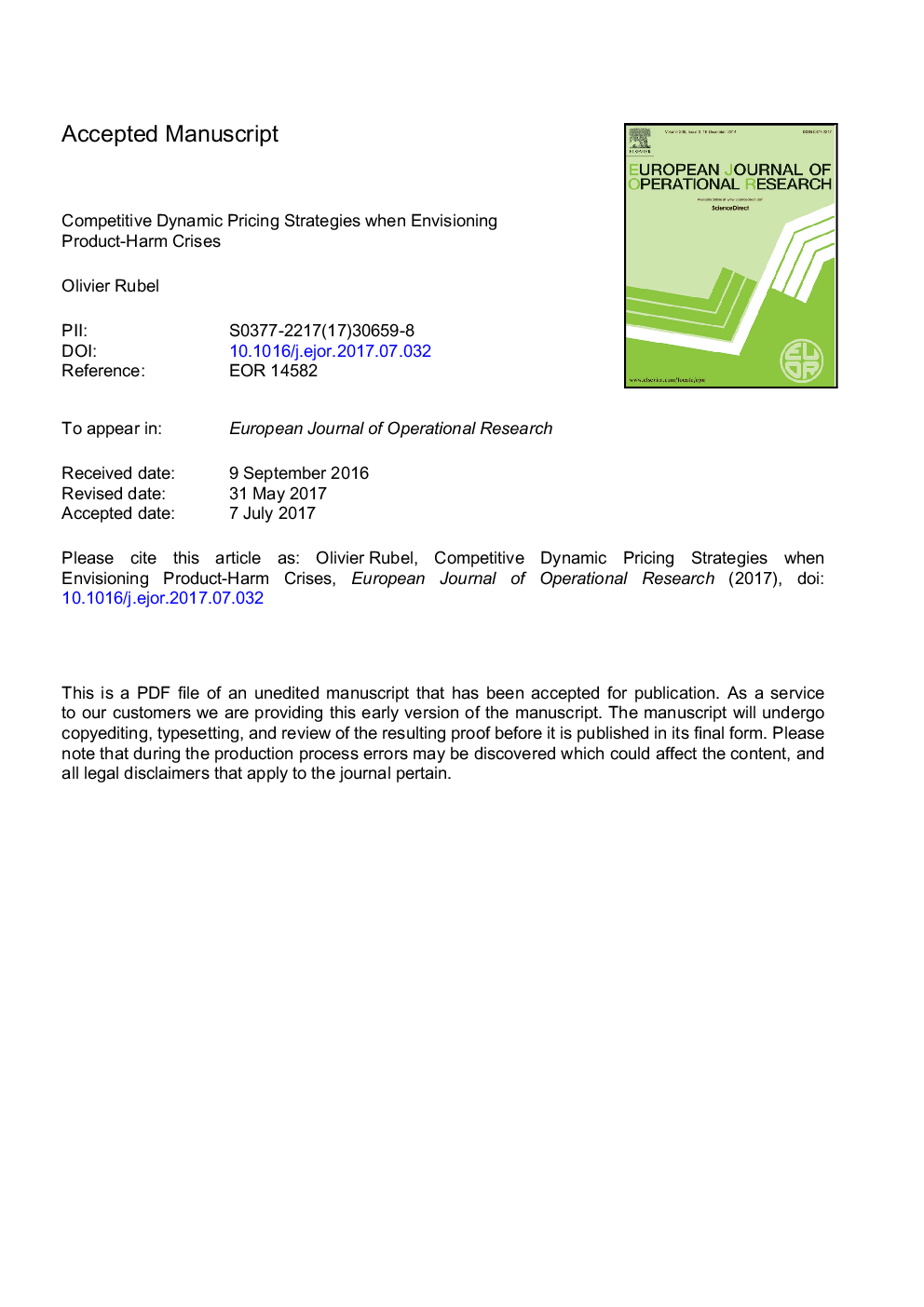| Article ID | Journal | Published Year | Pages | File Type |
|---|---|---|---|---|
| 6895379 | European Journal of Operational Research | 2018 | 28 Pages |
Abstract
Product-harm crises force managers to implement pricing strategies that optimally balance profitability with future potential costs of a recall. We propose a stochastic differential game to investigate what should be the optimal competitive pricing strategies in such contexts. In the proposed model, firms strategically choose prices taking into account that any player in the market can be forced to recall large volume of products at random dates. The characterization of the optimal pricing strategies yields novel managerial insights. We first find that prices of risk-prone products should be higher than prices of risk-free products due to the addition of state dependent risk-premia. Optimal pricing strategies differ depending on whether firms play Nash or Stackelberg. Furthermore, we find that despite its leadership position, the value function of the leader is lower than the value function of the follower. Finally, we discover that long term profits of competing firms can increase with intensities of the jump processes governing product harm crises. This surprising result happens because anticipating a product harm crisis softens price competition.
Related Topics
Physical Sciences and Engineering
Computer Science
Computer Science (General)
Authors
Olivier Rubel,
